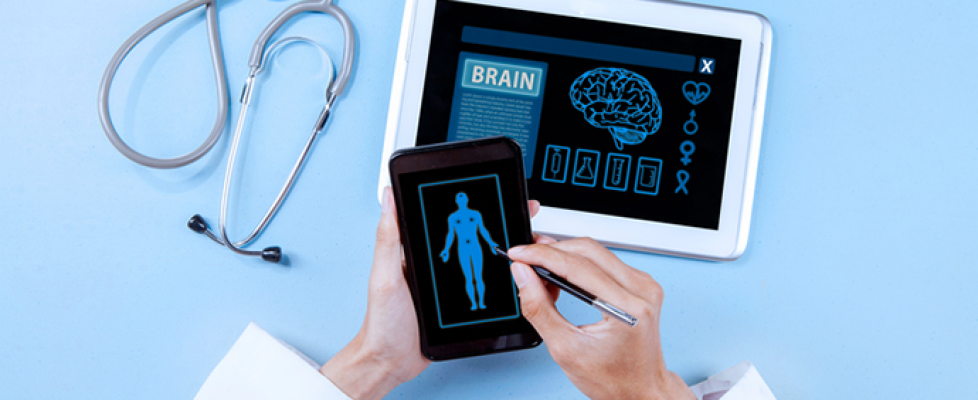Remote patient monitoring is not the “future.” It’s the “now.”
Every patient who could benefit should be armed with the sophisticated and validated technologies currently available to monitor key biometrics at home to alert patients and their clinicians of abnormalities and opportunities for early intervention.
By LUCIENNE IDE Post a comment / Feb 3, 2021 at 10:11 AM
As the founder of a health IT company and a clinician, I spend more time thinking about improving care delivery for others than in the role of a patient or caregiver to a loved one – and for that I’m grateful.
Recently, though, my husband required surgery to repair a congenital heart issue. While at the hospital, I was humbled by the hardworking professionals who have borne an unimaginable burden this year. I was awestruck by the well-honed skills of surgeons repairing the human body. But I also was perplexed at the outdated systems and technology that persists in everyday medicine.
As healthcare systems strive to recover from losses due to the pandemic, patient acquisition and retention have never been more urgent, and patient experience has never been more critical. A new guide from Bright.MD offers a digital checklist on how to improve the patient experience.
After spending a decade in clinical medicine, I decided I could best help patients through healthcare innovation – first as an investor, then as an entrepreneur – because I knew our industry could do better. Two weeks with my husband in the hospital, and subsequent follow-ups, made me realize there’s still a long way to go.
This fact became most apparent after my husband’s life-saving surgery, done by a world-class surgical team. During his hospital stay, he was connected to a continuous heart monitor with telemetry to the nurses’ station. And they meticulously tracked his fluid balance, pulse oximetry and multiple blood pressure measurements. But at discharge, he received a photocopied chart and was expected to keep track of key metrics, including weight, blood pressure, pulse and medications.
This made me take a step back, as the technology to bridge this gap is available today. In fact, remote monitoring and telehealth capabilities are at the heart of the recently announced Centers for Medicare & Medicaid Services Acute Hospital Care At Home program, which is helping address hospital overcrowding during the pandemic. If it works for this, why couldn’t it be applied to every patient?
Ironically, this technology is something that we already have at home. Once discharged, my husband wore two smartwatches that tracked his heart rate. One morning he awoke feeling “off.” I took his blood pressure and realized his pulse was above normal. The heart rate data from the smartwatches showed that he had gone into atrial flutter overnight. Armed with this data, we returned to the hospital to consult with his cardiologist. Since she could verify how long my husband had been in an abnormal rhythm, she was able to try medical treatment that is limited to use within the first 24 hours of arrhythmia.
In this experience, we had an unfair advantage. I work in tech and knew how to proactively apply a consumer device, like a smartwatch, to help track my husband’s health. Plus, I’m a clinician. I knew that arrhythmia was a potential postoperative complication, that there’s a short window for medical intervention following the onset of atrial fibrillation or flutter, and had the confidence to insist we be seen as soon as problems arose.
Smartwatches and fitness trackers are now ubiquitous. There are a variety of proven telehealth solutions available to hospitals and clinicians. There’s no reason we should have had an advantage over other patients who had to rely solely on that photocopied chart.
The Need to Accelerate Adoption of Existing Technologies for RPM: Health Outcomes Outweigh Health Costs
Great technological strides have been made, broadly solving for the issues of privacy, security and workflow concerns that have historically posed unique challenges in healthcare. And innovation continues to deliver the promise of making providers’ and patients’ lives better.
With the availability of new devices and telehealth applications, the healthcare industry has few excuses for not enabling hospitals and health systems to leverage cutting-edge technology to improve outcomes and prevent complications. We must break free from the clinical inertia that has plagued this industry for years, and understand that benefits far outweigh costs.
Hospitals, clinics and providers must widely use the incredible tools available to them. Every patient who could benefit should be armed with the sophisticated and validated technologies currently available to monitor key biometrics at home to alert patients and their clinicians of abnormalities and opportunities for early intervention.
Technology must become more central to the core of our industry, rather than just a series of unconnected apps that provide point data here and there. By applying it in an intelligent and integrated way, and continuing to expand and increase reimbursement for this continuous model of care making RPM services permanently reimbursable, we can leverage digital technology to achieve the quadruple aim.
After we showed the cardiologist the heart rate data gathered by my husband’s smartwatches, she responded, “That is the future of healthcare!” But frankly, that future is now.

